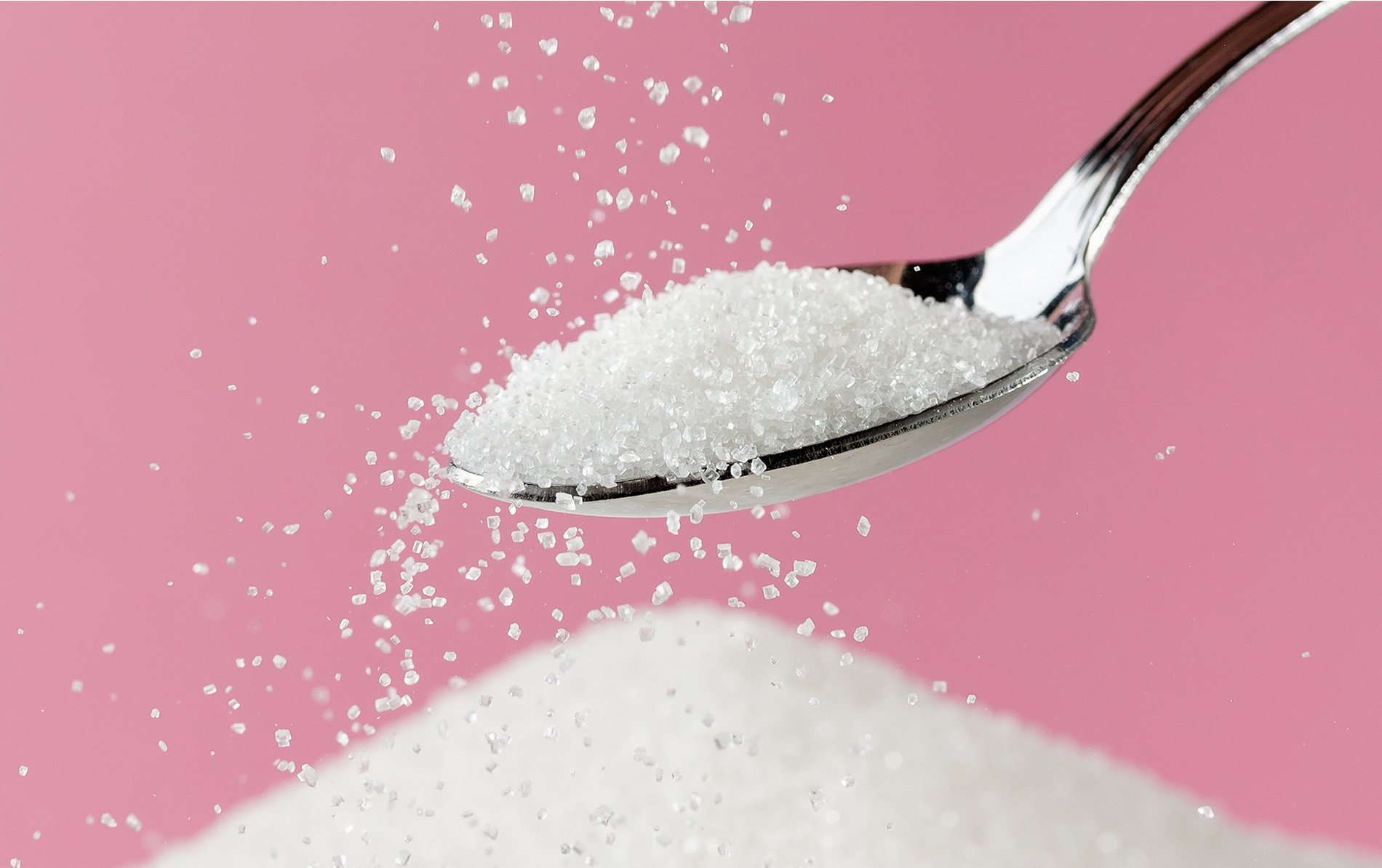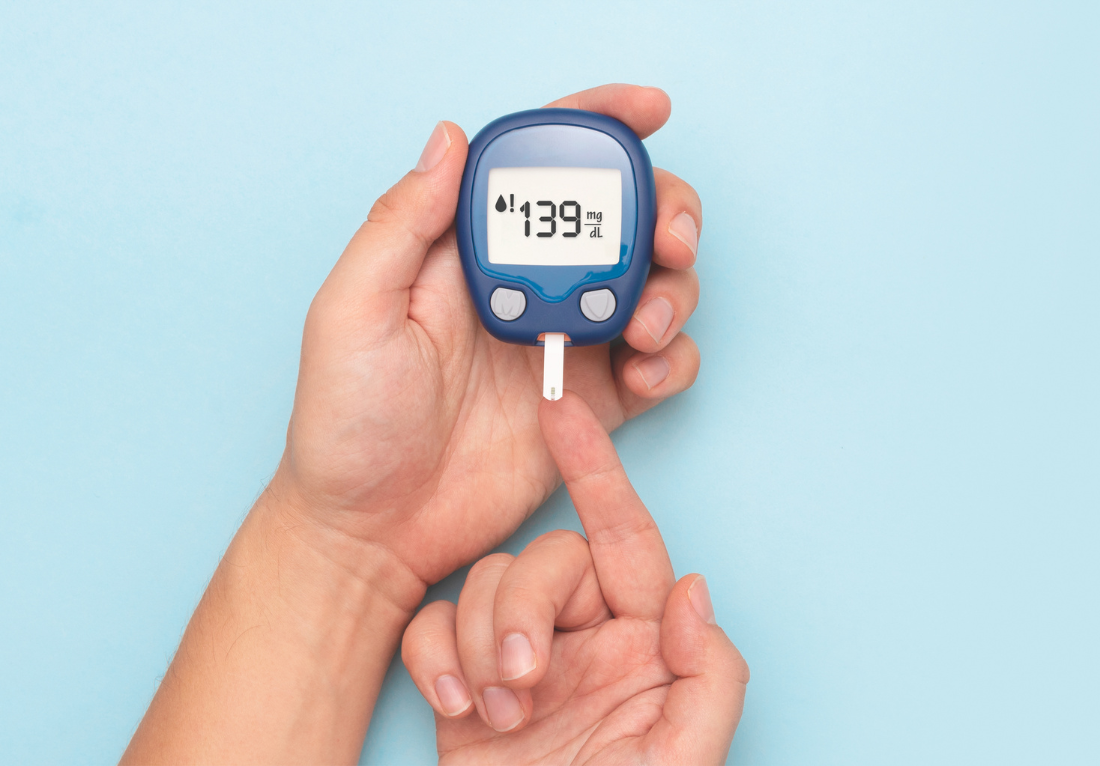
Your Sucralose Questions, Answered

People have been including sucralose in their low-carb and keto diets for decades, and it has not interfered with getting excellent results.
Sucralose is one of the most common keto-friendly sweeteners. (It’s even the one Keto Chow uses!) Unfortunately, there’s a lot of misinformation about it, so let’s take a moment to go through what the science says.
What is sucralose?
Sucralose is an artificial sweetener used in countless foods and beverages that are labeled “sugar-free” or “no sugar added.” It comes in liquid and granulated forms, but you’re probably most familiar with seeing it in yellow packets on the table at a restaurant or on the counter at coffee shops. (You might recognize it as Splenda®—though it’s important to note that Splenda only has a tiny amount of actual sucralose and is mostly filler. More on that later.)
Sucralose is created when chlorine atoms are added to sucrose (a.k.a. table sugar). This changes the sucrose into something your body does not recognize as a carbohydrate, and from which your body doesn’t get any energy. In other words, sucralose doesn’t provide any calories.
By weight, sucralose is about 600 times sweeter than sugar, so only a tiny amount is needed to impart the same sweetness as a much larger quantity of sugar.
How does your body process sucralose?
Most sucralose is not absorbed in your body. About 85% of it is eliminated in your stool. The remaining 15% is absorbed and then ultimately excreted unchanged. (Some sources state that 11–27% of sucralose is absorbed. Still, most of it remains unchanged and is excreted in the urine.) Even though the majority of sucralose is not absorbed, it doesn’t cause the same GI issues that many other sweeteners do. (This means sucralose won’t give you the runs!)
However, because it’s so concentrated, bulking agents and fillers are often added in order to lend weight and volume. The additives typically used are dextrose and maltodextrin. (For example, granulated Splenda is approximately 1% sucralose and 99% maltodextrin.) This means that it can end up having calories (and causing an insulin response) if those fillers and bulking agents are used.
(Keto Chow uses pure sucralose, without any of these fillers or bulking agents.)

What is the safety status of sucralose?
Sucralose was discovered in 1976 and first approved for use in 1991 in Canada, and the US in 1998. It has also been determined to be safe by public health authorities around the world, including the European Union, Canada, Japan, Australia, and New Zealand.
Sucralose is safe in the amounts people would reasonably consume, as well as in quantities far higher than that. The cutoff point above which sucralose consumption might be harmful has a huge margin of safety built in – meaning, even people considered “heavy users” really won’t come anywhere near close to this limit.
For example, an adult weighing 160 pounds would have to drink 1500 12-ounce soft drinks sweetened with sucralose every day to consume an amount close to the highest level at which no adverse effects would be expected. Good luck with that! Forget any risks from the sucralose – who could afford to spend that much time in the bathroom peeing every day?!
A metric called ADI – acceptable daily intake – is a bit more conservative. It’s “the amount of a food additive that, if consumed daily throughout a person’s life, would be considered safe by a wide margin.” To reach the ADI for sucralose, a 160-pound person would have to ingest an amount of sucralose equivalent in sweetness to about one pound of sugar a day. Even for people who eat or drink “a lot” of sugar, an entire pound every day would be a pretty remarkable feat. Your taste buds would give out before you came close to the amount of sucralose it would take to reach that level of sweetness.
In other words, there’s very little risk that anyone is going to consume sucralose in quantities that come close to potentially harmful levels.
Is sucralose safe for diabetics?
Sucralose has been shown to be safe for healthy people – including having a negligible effect on blood sugar, insulin, and HbA1c – but what about if you have diabetes?
The evidence shows that sucralose does not significantly affect blood sugar or C-peptide (indicative of insulin) in people with diabetes (either type 2 or type 1). One study showed that subjects with type 2 diabetes who consumed sucralose at 7.5mg/kg/day for 3 months (nearly triple the estimated maximum intake) showed no change in fasting glucose, fasting C-peptide, or HbA1c compared to subjects who took a placebo.
Bottom line: “the majority of the clinical trials that examined repeated daily consumption of sucralose by healthy and diabetic patients showed no significant effects on blood glucose, insulin, or C-peptides.”
Additionally, sucralose does not accumulate in the body and it does not have glycating effects like sugar does. This means it doesn’t bind to the blood or other tissues and therefore does not affect hemoglobin A1c.

When in doubt, test
If you’re concerned about the effect of sucralose on your blood sugar, it’s easy enough to determine the impact. Use a glucometer or a CGM (continuous glucose monitor) and see what happens. Evaluate whether sucralose raises your glucose, and if so, by how much, and see how long it takes to come back down to baseline (your starting level). To isolate sucralose as the only variable and eliminate confounding factors, it’s best to use sucralose by itself, or with something which you already know has no effect on your blood sugar. For example, drink a beverage sweetened with liquid sucralose.
On the other hand, it’s good to test the way you usually use it. If you use a packet of Splenda or a spoonful of granulated sucralose in your coffee or add it to recipes, then test it that way. Take advantage of available technology if you want to know for certain whether sucralose affects your glucose.
What are the other potential effects of sucralose?
Sucralose provides no calories and doesn’t affect blood sugar and insulin, but there are other potential effects that may influence your choice about whether to include this in your diet or steer clear.
Some evidence suggests that sucralose can alter hunger and satiety hormones, and cause changes to the gut microbiome. It’s possible that sucralose and other non-nutritive sweeteners may cause cravings via “uncoupling” the sweet taste from incoming energy. That is, it “fools” the brain into thinking food is coming soon, which stimulates the pancreas to secrete a small amount of insulin. However, being that people don’t experience hypoglycemia after ingesting sucralose, this is unlikely to have a real-world significance.
Whether sucralose alters hunger signaling or causes cravings is a highly individual thing. Many people include sucralose in their diet and don’t experience increased appetite or more sugar and carb cravings. On the other hand, some find that any hint of sweetness, whether from natural sugars or non-sugar sweeteners, causes cravings for more. If this is true for you, then it’s best to avoid these altogether, unless you don’t mind fighting the cravings for whatever length of time they last.
Regarding the microbiome, it’s important to understand that changes aren’t automatically bad. If the types of bacteria in your colon change, this doesn’t necessarily mean they’ve changed for the worse, particularly if the changes occurred while you were reversing type 2 diabetes or insulin resistance, improving or reversing PCOS, kidney disease, fatty liver, or while experiencing a dramatic improvement in your mental health. If the composition of your gut microbiome has changed, but your physical or mental health have undeniably improved, you can decide for yourself which is the bigger concern.
Summing up
Sucralose is not required on a low-carb or keto diet. If you prefer to avoid it, that’s easy to do. But if there are foods or beverages you enjoy that are made with sucralose (like many of Keto Chow’s flavors), here’s what you need to know: people have been including sucralose in their low-carb and keto diets for decades, and it has not interfered with getting excellent results. They’ve lost weight and reversed or improved a long list of chronic health issues while using sucralose to enjoy sweet-tasting foods and beverages without the adverse effects of eating excessive sugar. If you find that sucralose causes sweet cravings or adverse effects for you, or you simply prefer to avoid artificial sweeteners altogether, you can thrive on a keto diet without these.




